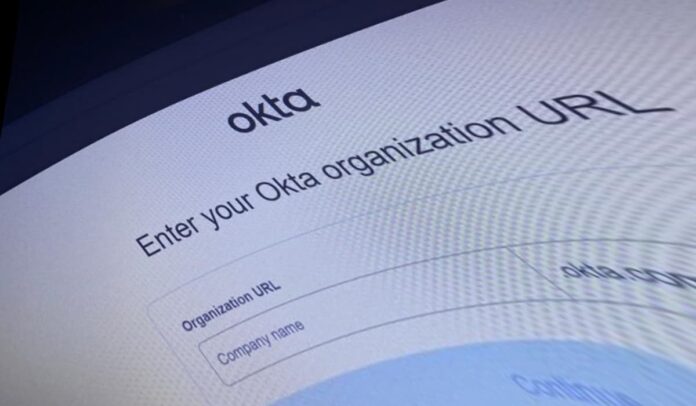[ad_1]
Okta’s investigation determined the breach to be associated with a Google account belonging to one of the company’s employees.
In a recent update following the initial data breach announcement made in October 2023, Okta, a prominent identity and access management (IAM) provider, disclosed that the number of affected customers has now reached 134. This breach enabled threat actors to gain unauthorized access to files.
“Some of these files were HAR files that contained session tokens which could in turn be used for session hijacking attacks,” David Bradbury, Okta’s chief security officer explained in Friday’s November 4th update.
Between September 28 and October 17, 2023, Okta encountered a sophisticated attack, wherein a threat actor accessed Okta’s support case management system by compromising a stolen account. Afterwards, the threat actor gained the ability to view, update support cases, and extract sensitive data, which included session tokens.
On October 19, Okta became aware of the breach following a notification from one of its customers, BeyondTrust, regarding suspicious activities. Among the prominent customers affected by the breach are Cloudflare and 1Password. Pedro Canahuati, the CTO of 1Password, disclosed the incident, confirming that threat actors were unable to access or extract user data during the attack.
Google Account Connection
Originally, the incident was thought to occur as a threat actor accessed an IT employee’s Okta session token by leveraging a stolen credential, thus gaining entry into 1Password’s Okta administrative portal. However, Bradbury later revealed that the investigation determined the breach to be associated with a Google account belonging to one of the company’s employees.
“Okta Security identified that an employee had signed-in to their personal Google profile on the Chrome browser of their Okta-managed laptop,” Bradbury said. “The username and password of the service account had been saved into the employee’s personal Google account. The most likely avenue for exposure of this credential is the compromise of the employee’s personal Google account or personal device.”
As to why it took two weeks for Okta to address the issue, Bradbury further explained that “Okta didn’t find any suspicious downloads in their system logs.” They noted that when someone looks at files attached to a support case, there’s a special record in their logs. But if a person goes directly to the Files section in the customer support system, it creates a different record. The attackers used this method in their attack.
“Okta first looked into access to support cases and then checked the logs related to those cases. On October 13, 2023, BeyondTrust gave Okta Security an IP address linked to the attackers. With this information, Okta found more file access events tied to the compromised account,” said Bradbury.
In a comment to Hackread.com, Tal Skverer, Research Team Lead at Astrix Security, discussed the use of personal accounts on devices issued by the company stating that “Service accounts skip security measures that normal accounts are subject to, such as MFA, therefore; their credentials are extremely vulnerable.”
“It is with utmost importance that service accounts follow the least privilege principle. Skverer emphasised. “To limit their permissions, their usage should be limited to very unique functionalities.”
The Okta breach is a major concern for the cybersecurity community, as Okta is a trusted IAM provider for many organizations, including Fortune 500 companies and government agencies. The breach also highlights the growing sophistication of threat actors and the need for organizations to take steps to protect their data from increasingly targeted attacks.
Nevertheless, the latest security breach at Okta serves as the second cyberattack on the company. In March 2022, LAPSUS$ hackers claimed to have breached Okta and Microsoft after leaking a trove of their data on Telegram.
What Organizations Can Do to Protect Themselves
Organizations can take a number of steps to protect themselves, including:
- Implement strong password policies and require users to use multi-factor authentication (MFA). MFA adds an extra layer of security to user accounts by requiring users to provide a second form of authentication, such as a code from their phone, in addition to their password.
- Regularly update security software and patches. Software developers release security updates to patch known vulnerabilities. By regularly updating their software and patches, organizations can help to reduce the risk of being exploited by attackers.
- Educate employees about cybersecurity best practices. Employees should be trained on how to identify and avoid phishing attacks, and how to protect their devices and data.
- Monitor their systems for suspicious activity. Organizations should have systems in place to monitor their systems for suspicious activity, such as unusual login attempts or data exfiltration.
RELATED NEWS
- IBM Notifies Janssen CarePath Customers of Data Breach
- Human Error: Casio ClassPad Data Breach Impacting 148 Countries
- Sony Data Breach via MOVEit Vulnerability Affects Thousands in US
- Fake Bitwarden Password Manager Website Drops Windows ZenRAT
- Kroll SIM-Swapping Attack Causes Data Breach at 3 Top Crypto Firms
- Passwords by Kaspersky Password Manager exposed to brute-force attack
[ad_2]
Source link
